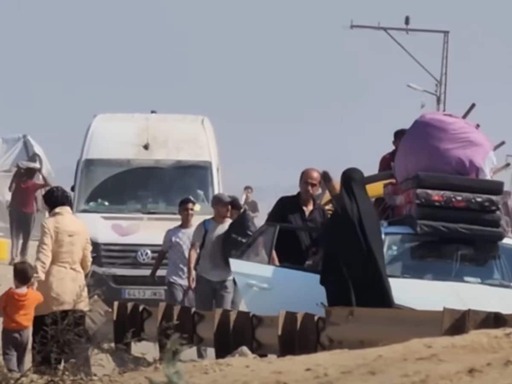In the heart of the Gaza Strip, where explosions echo and plumes of smoke rise, hundreds of thousands of Palestinians face a harsh reality: repeated displacement in search of safe shelter.
The ongoing genocide is forcing families to leave their homes, memories, and possessions, on a perilous journey to temporary shelters that often lack the most basic necessities.
This updated report highlights the suffering of internally displaced persons in Gaza, tells their stories, and outlines the challenges they face in the context of siege, based on recent data from the United Nations (UN) and humanitarian organisations as of late September 2025.
The reality of displacement in Gaza
According to reports from the UN Office for the Coordination of Humanitarian Affairs (OCHA), Israel has displaced more than 1.9 million people in Gaza since the recent escalation of the conflict. This represents nearly 90% of the Strip’s 2.1 million population.
Many of these displaced persons are living in overcrowded tents or UNRWA schools. There, conditions are exacerbated by a lack of food, clean water, and healthcare. Continued shelling makes even these shelters unsafe, forcing families to move again, in a vicious cycle of fear and instability.
In the last month alone, more than 200,000 displacements from north to south have been recorded. This included 56,000 since last Sunday, with new evacuation orders covering large areas of Gaza City and Khan Yunis.
More than 86% of Gaza is now under Israeli military control or evacuation orders, limiting safe opportunities for return or settlement.
Um Muhammad’s story: a journey with no end
Um Muhammad, a mother of five, lived in the Al-Rimal neighbourhood of Gaza City before an air strike destroyed her home. She said with immense sadness:
We have nothing left but the clothes on our backs.
Her family was forced to flee to a school in Khan Yunis. However, the bombing reached the area, so they moved to a tent on the outskirts of Rafah. She added:
Every day we hear that there is a safer place, but we discover that there is no safe place in Gaza.
Her family now lives in a tent that leaks when it rains, with barely enough food for one meal a day.
Recently, the closure of Al-Rashid Street has reinforced the blockade, making even southbound travel without inspection difficult.
The challenges of life in the camps
The temporary camps, whether in schools or tents, suffer from a severe lack of resources. Clean water is scarce and sanitation facilities are inadequate, increasing the spread of diseases such as hepatitis.
Children, who make up nearly half of the displaced population, are deprived of education. They suffer psychological trauma from constant exposure to violence. Pregnant women and the elderly face additional challenges due to a lack of medical care and medication. Recently, the United Nations Children’s Fund (UNICEF) reported an increase in malnutrition, with 404 malnutrition-related deaths recorded since October 2023. This included 141 children as of August 2025.
Relief efforts and obstacles
Organisations such as UNRWA and the Red Cross are attempting to provide aid. However, restrictions on the entry of relief supplies into Gaza are hampering these efforts.
Aid trucks are often prevented from crossing or delayed by military operations. No humanitarian aid, including food, has been allowed in since March 2025. Local volunteers risk their lives to distribute food and supplies, but the quantities are insufficient to meet the growing needs.
In September 2025, the UN reported that at least five displaced persons were injured in strikes on UNRWA facilities housing more than 11,000 people in Gaza.
The new aid distribution plan through the Gaza Humanitarian Foundation (GHF) has also led to mass casualties. Israel has killed more than 1,889 people trying to access food since May 2025.
The voice of people suffering forced displacement: a call for solutions
The displaced are calling for urgent solutions, including a ceasefire, the opening of safe humanitarian corridors, and increased aid.
Abu Yasser, a displaced person from Jabalia:
We want to live with dignity, not run away every day.
Residents are also calling for the reconstruction of destroyed homes to end the cycle of temporary displacement. In recent posts on X, activists described displacement as “slow death” and reject any forced displacement.
The journey of displaced persons in Gaza is not simply a move from one place to another, but a daily struggle for survival. Behind every tent and every story, there is a person who dreams of a safe and stable life. As the genocide continues, these families remain trapped in a cycle of despair, waiting for international intervention to restore their hope. They call upon the world to listen to their voices and take serious steps to end their suffering, especially with the approach of winter, which will only exacerbate the crisis.
Feature image via Al Jazeera English/Youtube.
By Alaa Shamali
From Canary via this RSS feed
Gaza is the only warzone in the world where refugees are not allowed to leave. Even supporters of Palestinians are mostly against giving the war torn people the option to wait out the war elsewhere.



